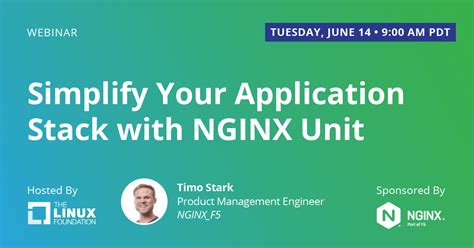In recent years, the landscape of web application deployment has significantly evolved. Nginx Unit, a versatile, open-source application runtime, exemplifies this shift by presenting an all-in-one solution that integrates language runtimes, static asset serving, TLS, and routing into a single package. Unlike traditional Nginx setups, which work alongside separate components like PHP-FPM, Unit aims to streamline this process by handling everything internally. This innovative approach can drastically simplify the deployment and management of web applications, particularly in containerized environments.
One major aspect of Nginx Unit that stands out is its ability to handle dynamic configurations without downtime, much like Caddy. This can be a game-changer for developers as it eliminates the need for external process supervisors like systemd or supervisord. Imagine the convenience of modifying backend configurations on-the-fly using an HTTP API, making real-time adjustments while keeping your applications alive and responsive. This capability is particularly advantageous in a microservices architecture or any highly dynamic environment where configuration changes are frequent.
For PHP developers, the integration of a dedicated SAPI (Server Application Programming Interface) for PHP within Nginx Unit eliminates the need for PHP-FPM, directly executing PHP scripts. This direct approach not only simplifies the stack but also enhances performance and decreases latency. A practical example of this is running a WordPress site on Nginx Unit, which some developers have reported to be effective and efficient. The reduced complexity and improved performance could make this a favorable option for many PHP-based applications.
One user pointed out the redundancy and complexity of traditional multi-container setups where Nginx and PHP-FPM run separately. In contrast, Nginx Unit can consolidate these into a single container, providing a more efficient and manageable solution. This unified approach also extends to other languages such as Python and WebAssembly, making Nginx Unit a versatile choice for various development stacks. The capability to handle multiple languages within the same environment promotes an ease-of-use that is highly valued in modern development workflows.
Nginx Unit is not without its criticisms. Some users have expressed concerns over the complexity of its configuration process, particularly when integrating into custom Docker containers. The necessity to manage configurations through an HTTP API instead of traditional config files can feel cumbersome. This has led to discussions about potential improvements in the user experience (UX) and developer experience (DX). Efforts are underway to enhance these aspects, including the introduction of tools like `unitctl`, which aims to simplify configuration management and deployment processes.
Security is another area where Nginx Unit shows promise, albeit with some limitations. While it can serve static assets and host various workloads, it currently does not support detailed request/response rewriting, caching, and automatic TLS out-of-the-box. However, given the open-source nature and active development of Nginx Unit, these features could be integrated in future releases. For now, developers often complement Nginx Unit with traditional Nginx or other reverse proxies like Caddy to cover these advanced functionalities.
The debate between single-binary deployments versus multi-process setups continues to be a hot topic among developers. Proponents of single-binary solutions like Caddy appreciate the streamlined deployments and reduced dependencies, although this approach can become troublesome when custom plugins are needed. On the other hand, experienced Nginx users argue that once you learn the configuration intricacies of Nginx, the performance and flexibility it offers are well worth the initial learning curve. Each option comes with its unique set of trade-offs, and the choice largely depends on specific project requirements and personal preference.
Overall, Nginx Unit represents a significant innovation in web server technology. By consolidating various functionalities into a single, flexible application server, it reduces complexity and boosts performance. While there are areas for improvement, particularly in easing the configuration process and expanding feature sets, its current capabilities make it a strong contender for modern web applications. Developers looking for an efficient, high-performance solution that integrates seamlessly with multiple programming languages will find Nginx Unit a valuable addition to their toolset. As the ecosystem around it continues to grow and evolve, Nginx Unit is poised to become an indispensable tool for developers worldwide.


Leave a Reply